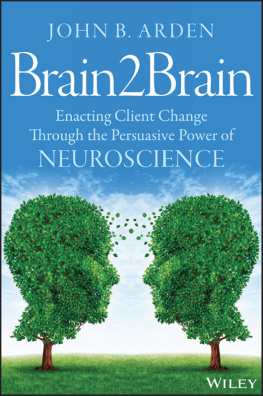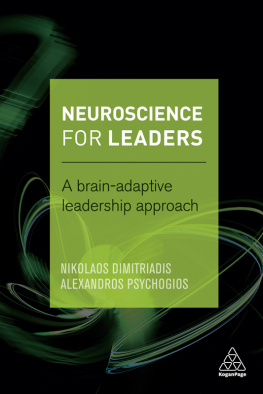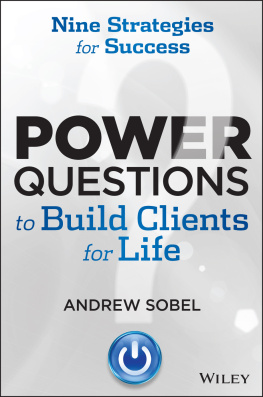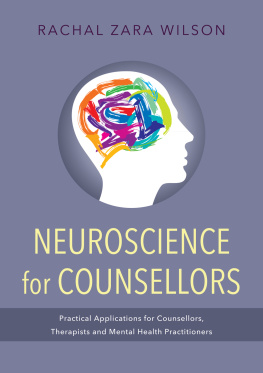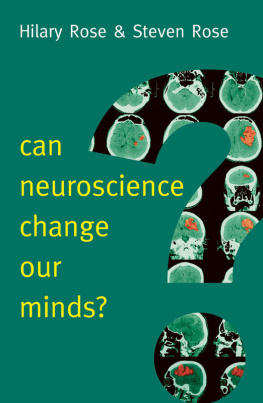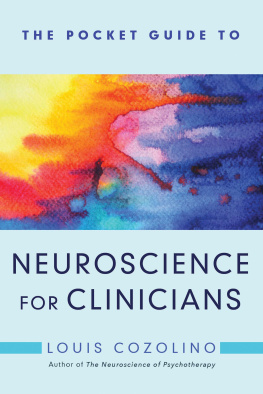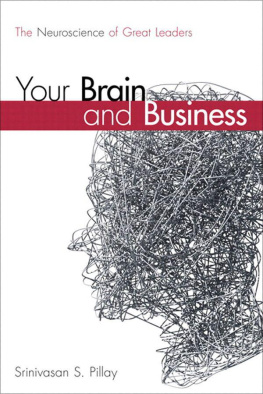
JOHN B. ARDEN
Brain2Brain
Enacting Client Change
Through the Persuasive Power of
NEUROSCIENCE
Cover design: Wiley
Cover image: Lightspring | Shutterstock
This book is printed on acid-free paper. 
Copyright 2015 by John Wiley & Sons, Inc. All rights reserved.
Published by John Wiley & Sons, Inc., Hoboken, New Jersey.
Published simultaneously in Canada.
No part of this publication may be reproduced, stored in a retrieval system, or transmitted in any form or by any means, electronic, mechanical, photocopying, recording, scanning, or otherwise, except as permitted under Section 107 or 108 of the 1976 United States Copyright Act, without either the prior written permission of the Publisher, or authorization through payment of the appropriate per-copy fee to the Copyright Clearance Center, Inc., 222 Rosewood Drive, Danvers, MA 01923, (978) 750-8400, fax (978) 646-8600, or on the web at www.copyright.com. Requests to the Publisher for permission should be addressed to the Permissions Department, John Wiley & Sons, Inc., 111 River Street, Hoboken, NJ 07030, (201) 748-6011, fax (201) 748-6008.
Limit of Liability/Disclaimer of Warranty: While the publisher and author have used their best efforts in preparing this book, they make no representations or warranties with respect to the accuracy or completeness of the contents of this book and specifically disclaim any implied warranties of merchantability or fitness for a particular purpose. No warranty may be created or extended by sales representatives or written sales materials. The advice and strategies contained herein may not be suitable for your situation. You should consult with a professional where appropriate. Neither the publisher nor author shall be liable for any loss of profit or any other commercial damages, including but not limited to special, incidental, consequential, or other damages.
This publication is designed to provide accurate and authoritative information in regard to the subject matter covered. It is sold with the understanding that the publisher is not engaged in rendering professional services. If legal, accounting, medical, psychological or any other expert assistance is required, the services of a competent professional person should be sought.
Designations used by companies to distinguish their products are often claimed as trademarks. In all instances where John Wiley & Sons, Inc. is aware of a claim, the product names appear in initial capital or all capital letters. Readers, however, should contact the appropriate companies for more complete information regarding trademarks and registration.
For general information on our other products and services, please contact our Customer Care Department within the United States at (800) 762-2974, outside the United States at (317) 572-3993 or fax (317) 572-4002.
Wiley publishes in a variety of print and electronic formats and by print-on-demand. Some material included with standard print versions of this book may not be included in e-books or in print-on-demand. If this book refers to media such as a CD or DVD that is not included in the version you purchased, you may download this material at http://booksupport.wiley.com. For more information about Wiley products, visit www.wiley.com.
Library of Congress Cataloging-in-Publication Data:
Arden, John Boghosian, author.
Brain2Brain : enacting client change through the persuasive power of neuroscience / John Arden.
p. ; cm.
Includes index.
ISBN 978-1-118-75688-1 (pbk) ISBN 978-1-118-75667-6 (pdf) ISBN 978-1-118-75689-8 (epub)
I. Title. II. Title: Brain 2 brain. III. Title: Brain to brain. IV. Title: Brain two brain.
[DNLM: 1. Nervous System Physiological Phenomena. 2. Counseling;methods. 3. Mental Disorderspathology. 4. Neurosciencesmethods. 5. Psychotherapymethods. WL 102]
RC480.5
616.8914dc23
2014031893
PREFACE
A sea change is beginning to occur in the mental health system. An international movement to break down the boundaries among the different schools of psychotherapy to find common denominators is occurring. These common denominators are brain based. The new integrative model subsumes the relevant contributions of the past and discards the purely theory driven cul-de-sacs based only on the tight confines of a particular school.
During my last 40 years working as a mental health administrator, training director, and psychologist, I have seen many phases, fads, and theories burst on the scene only to fade away a few years later. Many of these phases and theories conflicted with one another. People seeking help from one therapist may hear a completely different perspective about their problem than they would from another well-meaning therapist from a different theoretical school.
The focus of this book is to provide you, the therapist, with suggestions on how to integrate all the domains of research, including neuroscience, in a down-to-earth manner to help clients understand and deal with depression and anxiety. The techniques that I will describe are supported by a broad body of research and consistent with what we know about how the brain works. Going beyond what has been called evidence-based practices (EBPs), these methods are ones shown by research to be most efficacious for helping people who suffer from various psychological problems. I explain which brain systems are either over- or underactivated when clients are anxious or depressed. The methods I describe to help clients with these problems bring together all areas of psychological research and neuroscience that are relevant to psychotherapy. I offer suggestions on how to help clients learn to activate areas of their brains that have been underactivated and how to quiet down those areas that have been overactivated, so that they can enjoy life without being plagued by anxiety and/or depression. By learning more about the brain, clients understand what they need to do to neutralize excessive anxiety or lift depression.
Consider this book a user manual for the brain. New cars and DVD players come with user manuals. Our brains do not. Clients can learn to use their brains more effectively. Today we know quite a bit about which brain networks are overactivated and which are underactivated with anxiety and depression. Thanks to brain imaging techniques developed in the last 20-30 years, such as functional magnetic resonance imaging (fMRI), we can not only identify those neural firing patterns but also see how certain psychotherapeutic techniques can calm down overactivated areas while activating those areas that need to be activated. Essentially, we can teach our clients how to tune up their brains.
This book attempts to normalize psychological disorders and their resolution so that you can explain and make more tangible recommendations to your clients. We must leave behind those countertrends that pathologize normal human reactions to life stressors.
LETTING GO OF THE 20TH CENTURY
To gain an understanding of where we are going, it is important to use a bird's-eye perspective of where we have been. During the 20th century, as psychotherapy became a healthcare profession, the various schools of psychotherapy had little in common. This was because theorists of each school possessed very little understanding of how the brain worked. Some theorists even thought that brain activity was irrelevant. Freud and James did consider the brain important. However, Freud could only hypothesize about what the future might bring, saying We must recollect that all of our provisional ideas in psychology will presumably one day be based on an organic substructure (Freud, 1914). The father of American psychology, William James, speculated that The act of will activates neural circuits (James, 1890). Because they and others could not base their theories on the operation of the brain, a disparate range of theories emerged, from radical behaviorists to primal scream. We could refer to this era as the Cartesian Era, a brainless period with no common denominator.
Next page
